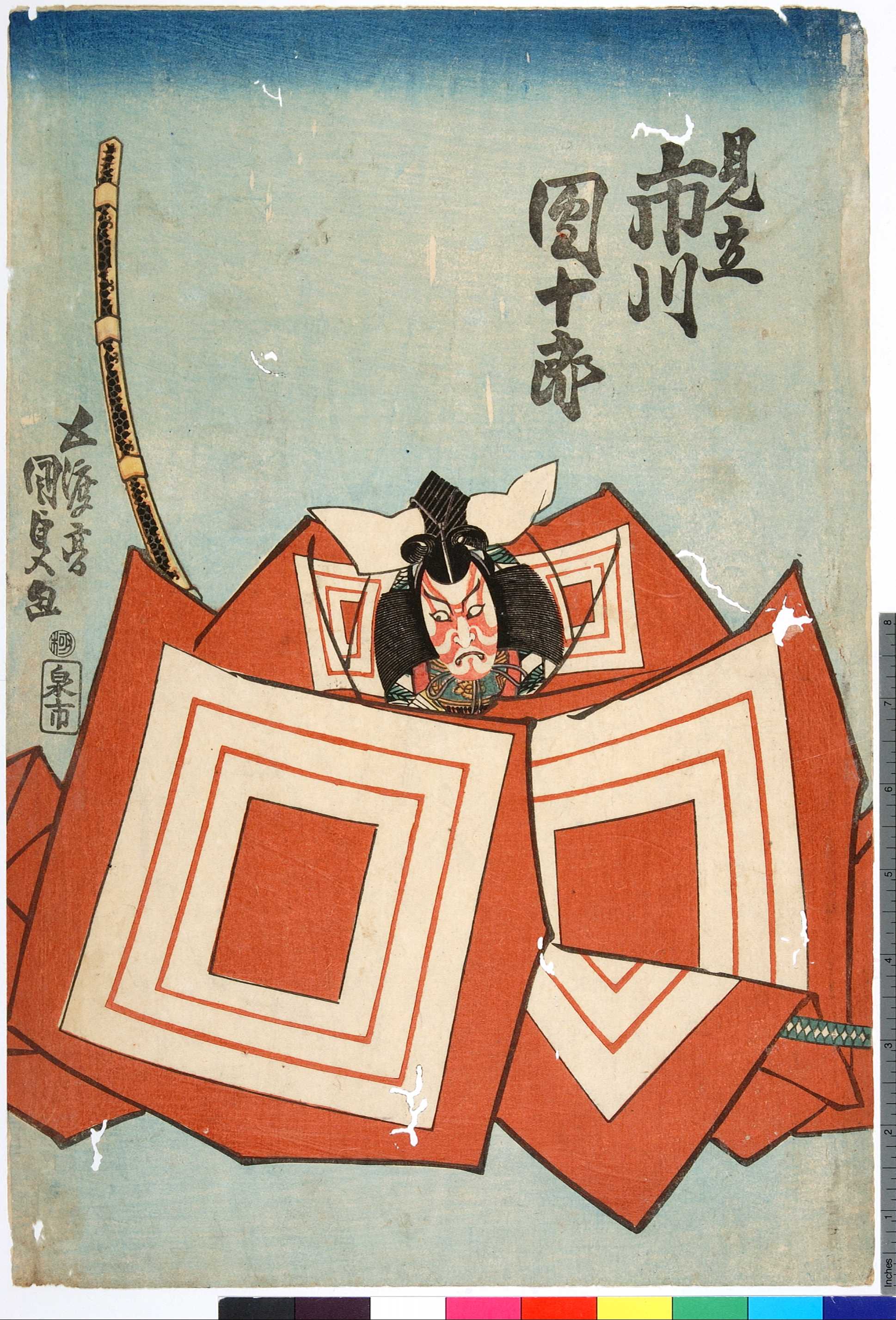E01 Disguise for Aragoto
-
"Mitate Ichikawa Danjyuro"
Artist: Kunisada the first Oban, Colour print
Published: ca.1834( Tenpo 5), in Edo
Ritsumeikan Art Research Center(arcUP1971)It is written that the origin of Aragoto was Ichikawa Danjyuro the first when he played the great warrior hero Sakata Kintoki of the puppet play based Kabuki program Shitenno Osanadachi in 1673 (Enpo 1), at Nakamura-za theatre in Edo. He acted in dynamic ways with inspiration from the puppets used in Konpira Jyoruri (puppet play) popular at that time.
Since then, every generations of Danjyuro have improved the techniques to represent the bravery of the hero who has superhuman power, with such as costumes and make-up, action, utterance, ways of delivering lines, and props. This section feature the techniques for impersonating mighty Aragoto characters, such as characteristic costumes and make-up. In addition to this, we will take a look at Yakusha-mon which can be seen on costumes as well.
This Yakusha-e (actor-print) described Ichikawa Danjyuro the eighth acting "Shibaraku" in imagination. His make-up was "Sujikuma" with vermilion lines on white base. And his costume was a yellowish-blown Suo (a kind of kimono) which large Mimasu-mon (the family crest of Ichikawa) were printed on, and long Hakama, and he wore a waist armor and gauntlets under the Suo which are emphasized by large sleeves and its large waist openings.
He held a large war sword exceeding 2 meters long which represented his strength.
His hear-style is called "Ita-bin" (board-like side locks) which is characteristic in side locks projecting transversely, he put Samurai eboshi (ceremonial hat for Samurai) and Chikaragami (paper used in pre-bout rituals) on it. Ichikawa Danjyuro the ninth changed the hair-style from Ita-bin to Kuruma-bin (side lock divided into several parts and projecting radially), and this style is still used on the stage.
Ichikawa Danjyuro the eighth played "Shibaraku" at the age of only 16 when he succeeded his name from his predecessor at the Kaomise performance in November 1832 (Tenpo 3), and in the following year as well. (,)[Glossary]
Konpira Joruri, Aragoto, Yakusha-mon, Shibaraku, Yakusha-e, Mimasu-mon, Kuma, Kaomise, Bin -

- 投稿日:
- by 8P
- カテゴリ: E Make-up and Costumes
- [編集]